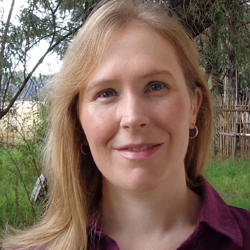UFS Prestige Scholar shares her vision on crystallography with worldwide audience

Dr Alice Brink |
Dr Alice Brink, a Prestige Scholar and lecturer in the Department of Chemistry at the University of the Free State, was selected by UNESCO to participate, together with some 15 other young scientists from all over the world, in a round-table discussion at the Opening Ceremony of the International Year of Crystallography.
During this event, that took place in Paris, France, Dr Brink could, on stage, share her vision as one of the next generation of scientists.
“The 15 crystallographers consisted of eight young, established scientists and seven ‘young-young’ scientists who are starting their careers. We participated in a group discussion in order for the crystallographic community to better understand the challenges faced by young scientists across the globe.
“It was a great privilege to be invited to be part of this talented and diverse discussion group and to hear the challenges that are faced by young scientists from different parts of the world. It is also comforting to hear that scientific difficulties that are found in South Africa are commonly experienced in both First and Third World countries,” said Dr Brink.
“Crystallography has directly influenced the development of numerous scientific fields such as chemistry, physics, mathematics, medicine, engineering and material sciences. More inter-departmental collaboration would benefit greatly from crystallography, as this multi-faceted science provides foundation principles for applied research,” she said.
The United Nations declared 2014 as the International Year of Crystallography, and it was officially opened at the UNESCO Headquarters in Paris by the Secretary-General of the UN, Ban Ki-moon.
The ceremony was video-streamed live to more than 500 destinations all over the world.